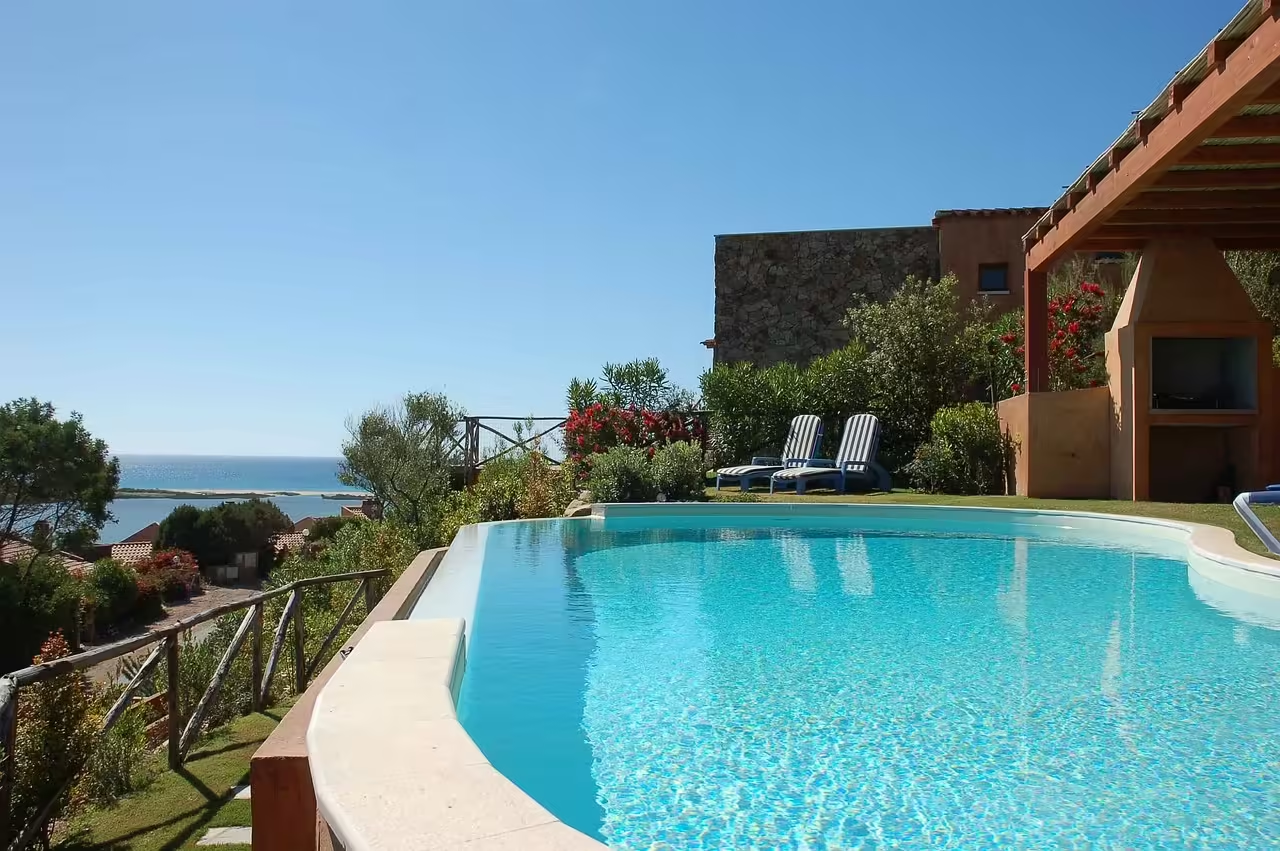Waterproofing a pool already built is essential to maintain its functionality and avoid problems such as water leaks. This process helps to protect the structure, ensuring its long-term durability. There are several waterproofing methods that offer different advantages and disadvantages. Each homeowner should evaluate their needs and the specific situation of their pool to choose the most appropriate option.
In this article you can discover what is a swimming pool liner and all its advantages and disadvantages for waterproofing.
Importance of waterproofing swimming pools
Waterproofing is a fundamental aspect to maintain the functionality and aesthetics of any pool. Over time, various factors can cause problems that affect the structure and water balance. For this reason, it is essential to consider waterproofing as a long-term investment.
Structure protection
The structural integrity of a pool can be compromised by constant exposure to water and weather conditions. Without proper waterproofing, it is possible for cracks and fissures to form, which can lead to irreversible deterioration. Protecting the structure avoids major costs in the future and ensures that the pool remains in optimal condition.
Water leakage prevention
Leaks not only represent an unnecessary expense due to water loss, but also affect the environment around the pool. When water leaks, it can deteriorate the foundation and cause problems in the garden or other nearby areas. Implementing an effective waterproofing system helps to keep water within the established limits, avoiding inconveniences in the long term.
Increased useful life
Proper waterproofing can significantly extend the life of the pool. By preventing leaks and structural damage, it reduces the need for constant repairs that can be costly. This not only benefits the owner's economy, but also ensures that the pool maintains its aesthetic appeal and functionality for a longer period of time.
Swimming pool waterproofing methods
Selecting the right method for waterproofing swimming pools is essential to ensure their durability. There are several options to suit different needs and construction conditions.
Geotextile sheets
These are synthetic materials that can be used to protect the pool structure. Their flexibility allows them to adjust to various shapes and sizes.
Advantages and disadvantages
- Advantages:
- Relatively low cost compared to other methods.
- Simple and fast installation.
- Adaptability to different structures.
- Disadvantages:
- They require periodic maintenance.
- Reduced aesthetics as it is placed over the existing coating.
Installation process
The process includes cleaning the pool surface, applying a layer of mortar and then laying the geotextile sheet, ensuring a precise fit to avoid wrinkles and bubbles.
PVC preformed membranes
This method involves the use of PVC sheets that are tightly installed. Its use is common in various applications due to its efficiency and reliability.
Advantages and disadvantages
- Advantages:
- High chemical and weather resistance.
- Aesthetically more attractive than geotextile sheets.
- Reduced need for maintenance.
- Disadvantages:
- Higher cost compared to other methods.
- Requires skilled labor for proper installation.
Installation process
To install PVC membranes, the surface must be completely clean. A specific adhesive is applied before unfolding the membrane and ensuring a perfect seal at the joints by heat welding.
Liquid membranes
This type of method is applied as a liquid that, upon drying, forms an impermeable barrier. Its use is especially effective in pools with complex shapes.
Applications and benefits
- Adaptation to complicated geometries.
- Good adhesion to the substrate.
- Resistance to thermal and chemical changes.
Surface preparation
Before applying a liquid membrane, it is vital that the surface is free of dirt, grease and other contaminants, thus ensuring proper adhesion and an effective result.
Materials used in waterproofing
Choosing the right materials is essential for effective pool waterproofing. The main components used in this process are discussed below.
Waterproof mortar
This type of mortar is specifically designed to resist water pressure and prevent leaks. Its formulation includes additives that improve its performance in humid environments.
Common uses
- Repair of cracks and fissures in the pool basin.
- Application on surfaces requiring a smooth, water resistant finish.
- Coating of areas around pool edges to prevent seepage.
Watertight mortar applications
- Creation of a waterproof barrier in areas prone to leaks.
- Application in drainage systems to ensure that water does not interfere with the structure.
- Repairs in concrete pools where watertightness is crucial.
Polyurethane
Considered one of the most versatile materials, polyurethane stands out for its adaptability and resistance. It is especially useful in pools with irregular shapes.
Strength and flexibility
- Its high elasticity allows it to expand and contract without losing effectiveness.
- It offers excellent resistance to chemicals and UV rays.
Application procedure
- The surface must be completely clean and dry before application.
- A uniform coat is applied using a roller or spray.
- It is advisable to allow adequate drying between coats, if several coats are used.
Epoxy resins
This material is used for its high adhesion and durability properties. It is implemented in areas where additional water resistance is required.
High adhesion properties
- Elasticity that maintains its elasticity without cracking over time.
- High adhesion capacity to different types of surfaces.
Application steps
- Start by cleaning and preparing the surface, removing any type of residue.
- Mix the epoxy resin according to the manufacturer's instructions.
- Apply generously to the desired areas, ensuring complete coverage.
Aspects to take into account when choosing the appropriate method
Choosing the right method for waterproofing a pool that has already been built involves considering several factors. These aspects ensure that the selected solution is the most effective and durable possible depending on the particular characteristics of the pool.
Condition of the pool shell
The condition of the vessel is one of the most important elements to evaluate before carrying out the waterproofing. It is essential to check for cracks, fissures or any other damage that may affect the effectiveness of the chosen method. A vessel in poor condition may require a more intensive approach, such as the use of liquid membranes or sheets that provide greater coverage.
Aesthetics and finishes
The appearance of the final assembly also plays a crucial role in the choice of method. Depending on the materials used, a more aesthetic or more functional finish can be achieved. For example, preformed PVC membranes offer a more polished finish compared to geotextile sheets, which may be less visually pleasing.
Budget and long-term cost
The initial cost of the waterproofing method should be considered, but it is also vital to evaluate future expenses related to maintenance and possible repairs. Sometimes more expensive methods may prove to be more cost-effective in the long run due to their durability and lower maintenance requirements. Therefore, it is advisable to perform a thorough analysis of the total investment before making a decision.
Maintenance and post-waterproofing care
Proper maintenance after the waterproofing of a swimming pool is essential to preserve its functionality and aesthetics. Following certain practices will help to ensure that the intervention is long-lasting and that future complications are minimized.
Periodic reviews
Regular inspections are essential to detect potential problems in time. These inspections should include the following actions:
- Checking for leaks at joints and edges.
- Inspection of the surface to detect wear or damage to the waterproofing.
- Check the condition of joints and anchors that may have lost their effectiveness.
It is recommended to schedule these inspections at least once a year to ensure that the pool remains watertight.
Repair of cracks and crevices
Prompt treatment of any crack or fissure is key to avoiding major problems. Steps to follow include:
- Identification of cracks: Check every corner of the pool for damage.
- Use of suitable products to seal cracks, ensuring compatibility with the installed waterproofing system.
- Post-repair testing to confirm correction of the problem.
Maintaining a proactive approach to repair will help extend the life of the pool and its waterproofing.
Cleaning and maintenance of coatings
Proper cleaning is essential not only to maintain aesthetics, but also to preserve the waterproofing material. The following aspects should be considered:
- Use of cleaning products that do not damage the waterproof membrane.
- Avoid using rough brushes that may scratch the surface.
- Clean the coatings at least once a month to avoid accumulation of dirt.
Regular maintenance of the pool is a long-term investment that will ensure its proper functioning."
Solutions to common problems
When it comes to waterproofing a pool that has already been built, it is common to encounter certain inconveniences. Here are some effective solutions to the most common problems that may arise.
Fiberglass crack treatment
Cracks in the pool structure can be a source of water leakage. To treat them, the use of fiberglass, which offers high strength and durability, is recommended. This method consists of:
- Clean the crack and remove any loose material.
- Apply a coat of epoxy resin to ensure a good base.
- Place the fiberglass mesh over the crack and cover with another layer of resin.
This treatment not only seals the crack, but also reinforces the structure, preventing future damage.
Prevention of leaks at critical points
Critical points in a pool, such as joints and drains, are prone to leaks. To prevent problems in these areas, it is suggested:
- Perform a proper sealing with specific products for swimming pool joints.
- Install monitoring systems that detect early moisture or leaks.
- Apply liquid membranes in drains and anchorage areas to reinforce waterproofing.
Implementing these solutions helps maintain the integrity of the pool, reducing the risk of water loss.
Improved adhesion in ceramic tiles
Ceramic tiles can present adhesion problems over time. To optimize its fixation, it is essential to consider the following steps:
- Prepare the surface properly, ensuring that it is clean and free of moisture.
- Use high quality adhesives, specially formulated for humid environments.
- Apply a coat of primer before installing the coating to improve adhesion.
This procedure ensures that the tiles are properly fixed and prolongs their service life.
Practical tips for proper waterproofing
Proper waterproofing of a swimming pool is essential to ensure its longevity and functionality. Here are some practical tips that can make this process easier.
Pay attention to joints and anchors.
The correct installation of joints and anchors is essential to avoid leaks. The points where different materials meet are especially vulnerable and must be sealed with specific products. A thorough analysis of these areas is recommended before proceeding with waterproofing. A good practice is to apply a suitable sealant that allows greater flexibility and resistance to temperature changes.
Selection of high quality products
Choosing high-end materials can make a difference in the effectiveness of the waterproofing process. Products made with specialized components, resistant to chemical agents and adverse weather conditions, will offer longer lasting protection. It is preferable to opt for solutions with quality certifications and good references in the market. Investing in quality materials can translate into lower maintenance costs in the future.
Considerations for in-ground and polyester pools
In-ground and polyester pools have different characteristics that may influence the type of waterproofing to be implemented. For masonry pools, the treatment of the joints and the compatibility of the products with the existing materials must be taken into account. In contrast, for polyester pools, the use of liquid membranes that adhere well to their surface is recommended, thus guaranteeing effective coverage. Knowing the particularities of each type will facilitate the choice of the most suitable method.


